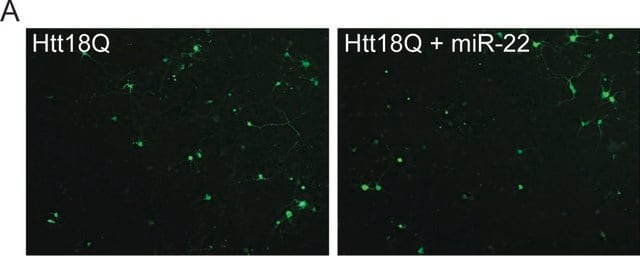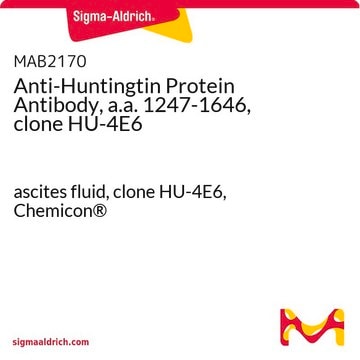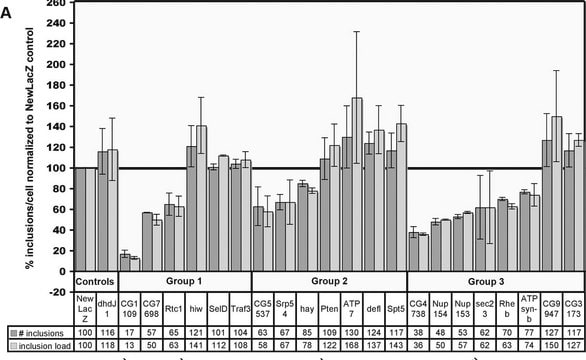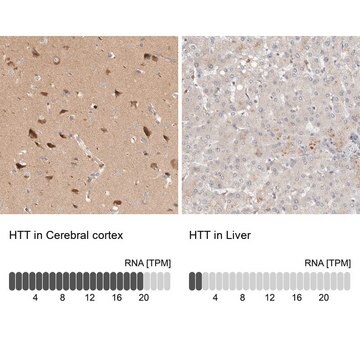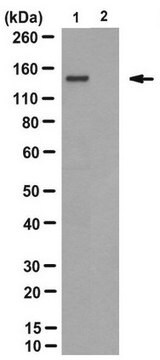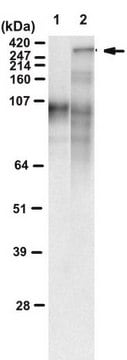H7540
Anti-Huntingtin (N-terminal) antibody produced in rabbit

affinity isolated antibody, buffered aqueous solution
Synonim(y):
Anti-HD, Anti-HTT, Anti-Huntington Disease, Anti-IT15
About This Item
Polecane produkty
pochodzenie biologiczne
rabbit
Poziom jakości
białko sprzężone
unconjugated
forma przeciwciała
affinity isolated antibody
rodzaj przeciwciała
primary antibodies
klon
polyclonal
Postać
buffered aqueous solution
masa cząsteczkowa
antigen ~110 kDa
reaktywność gatunkowa
mouse, human, rat
rozszerzona walidacja
recombinant expression
Learn more about Antibody Enhanced Validation
stężenie
~1.5 mg/mL
metody
western blot: 0.5-1.0 μg/mL using a HEK-293T cell lysate expressing a N-terminal fragment of human huntingtin
numer dostępu UniProt
Warunki transportu
dry ice
temp. przechowywania
−20°C
docelowa modyfikacja potranslacyjna
unmodified
informacje o genach
human ... HTT(3064)
mouse ... Htt(15194)
rat ... Htt(29424)
Powiązane kategorie
Opis ogólny
Zastosowanie
- in magnetic bead-assisted immunopurification
- in western blotting
- in immunofluorescent staining
- in immunoblotting
Działania biochem./fizjol.
Postać fizyczna
Oświadczenie o zrzeczeniu się odpowiedzialności
Not finding the right product?
Try our Narzędzie selektora produktów.
polecane
Kod klasy składowania
10 - Combustible liquids
Temperatura zapłonu (°F)
Not applicable
Temperatura zapłonu (°C)
Not applicable
Środki ochrony indywidualnej
Eyeshields, Gloves, multi-purpose combination respirator cartridge (US)
Certyfikaty analizy (CoA)
Poszukaj Certyfikaty analizy (CoA), wpisując numer partii/serii produktów. Numery serii i partii można znaleźć na etykiecie produktu po słowach „seria” lub „partia”.
Masz już ten produkt?
Dokumenty związane z niedawno zakupionymi produktami zostały zamieszczone w Bibliotece dokumentów.
Nasz zespół naukowców ma doświadczenie we wszystkich obszarach badań, w tym w naukach przyrodniczych, materiałoznawstwie, syntezie chemicznej, chromatografii, analityce i wielu innych dziedzinach.
Skontaktuj się z zespołem ds. pomocy technicznej